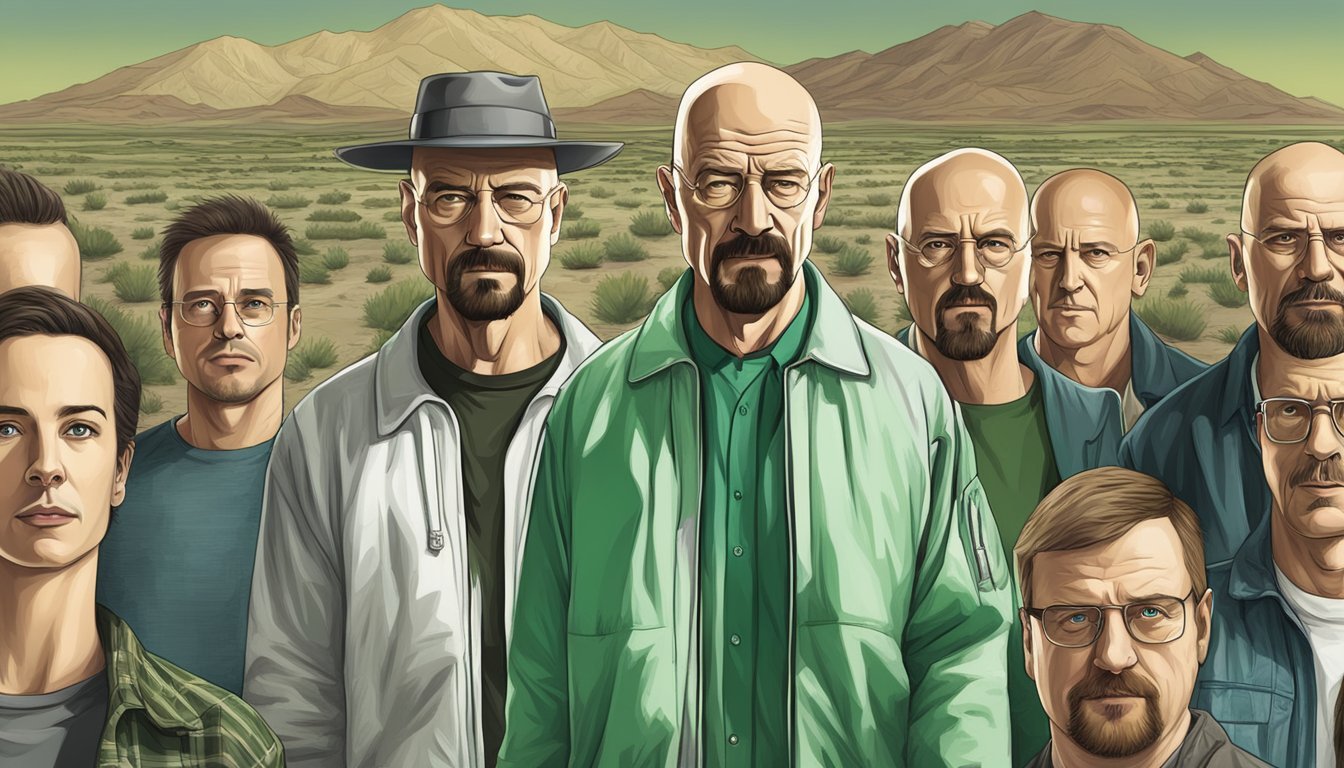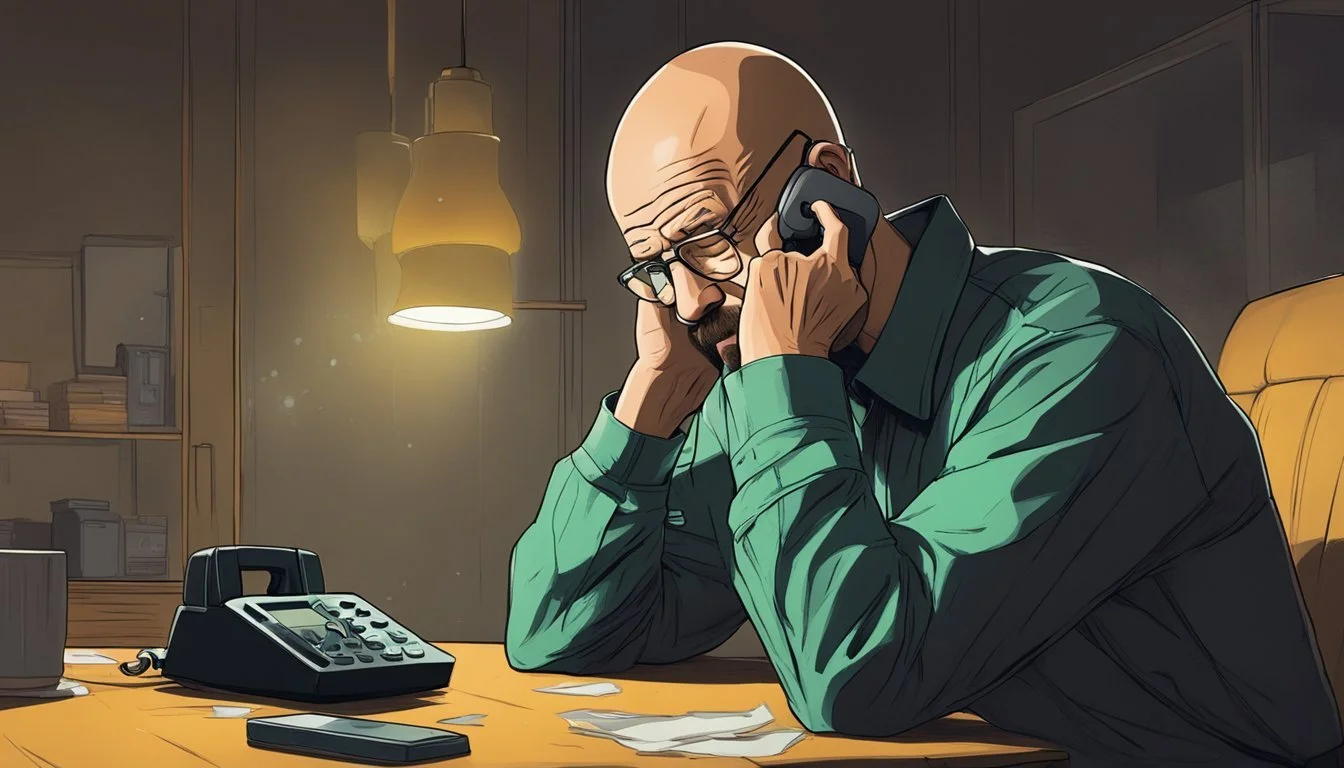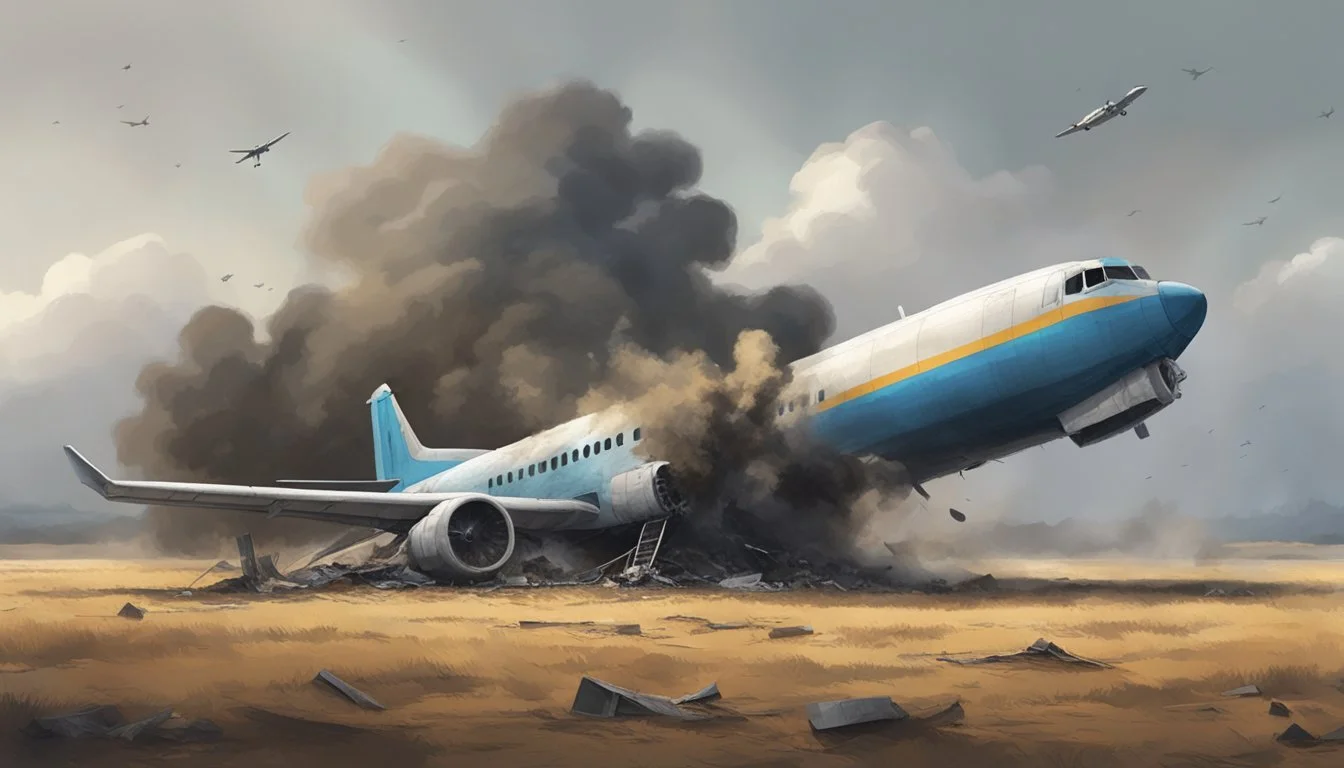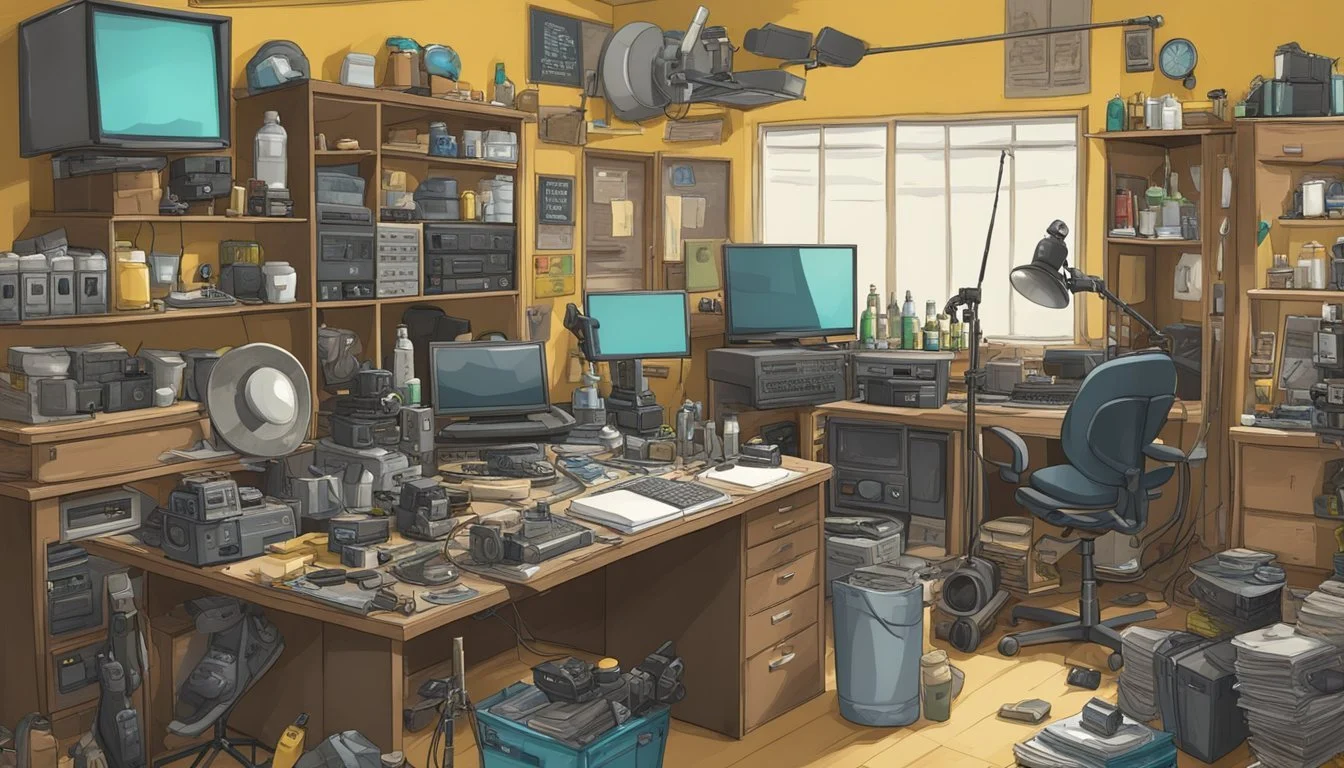8 Breaking Bad Scenes That Were Harder to Film Than You Think
Behind-the-Scenes Challenges Revealed
Breaking Bad captivated audiences with its gripping storylines and intense performances. The show's cast and crew poured their hearts into creating unforgettable moments that resonated with viewers.
Behind the scenes, filming certain sequences proved more challenging than others. From emotionally taxing scenes to complex technical setups, the actors and production team faced numerous hurdles in bringing Breaking Bad's most powerful moments to life. These behind-the-scenes struggles often resulted in some of the series' most memorable and impactful scenes.
1) Walter White's Emotional Phone Call
Walter White's phone call to Skyler in the episode "Ozymandias" is considered one of Breaking Bad's most intense scenes. Bryan Cranston's performance during this call required exceptional emotional range and nuance.
The scene was particularly challenging to film due to its complex layers of meaning. White had to convey anger and threats while simultaneously attempting to exonerate Skyler from any involvement in his crimes.
Cranston and Anna Gunn, who played Skyler, were not in the same location during filming. This added difficulty as they had to react to recorded audio rather than a live performance from their co-star.
The crew had to carefully balance the audio levels to capture both the intensity of Walter's voice and Skyler's quieter responses. Multiple takes were necessary to achieve the right tone and pacing for this pivotal moment.
Lighting and camera work also played crucial roles in enhancing the scene's emotional impact. The team had to create a visual atmosphere that matched the tension and desperation in Walter's voice.
2) Jesse's Desert Breakdown
Jesse Pinkman's emotional breakdown in the desert stands out as one of Breaking Bad's most intense scenes. Actor Aaron Paul delivered a raw, powerful performance that left viewers stunned.
The scene was physically and mentally demanding to film. Paul had to repeatedly throw himself onto the hot desert sand, enduring scrapes and bruises in the process.
The extreme heat of the New Mexico desert added another layer of difficulty. Temperatures soared above 100°F, making it challenging for the cast and crew to work for extended periods.
To capture Jesse's anguish authentically, Paul drew from personal experiences and immersed himself in the character's mindset. This emotional preparation took a toll on the actor.
The crew worked tirelessly to capture multiple takes from various angles. This ensured they had the perfect shot to convey Jesse's desperation and mental state.
Despite the grueling conditions, Paul's commitment to the scene paid off. His performance in this pivotal moment is widely regarded as one of the series' most memorable.
3) The Great Train Robbery Sequence
The train heist scene in Breaking Bad's fifth season was an ambitious undertaking that required meticulous planning and execution. Shot over four days outside Santa Fe, New Mexico, the production utilized the same private railway line featured in the 1969 film Butch Cassidy and the Sundance Kid.
The sequence involved precise timing and coordination between the actors, stunt performers, and train operators. The crew had to ensure the safety of everyone involved while creating a believable and suspenseful robbery scenario.
Filming took place in a remote location, which presented logistical challenges for transporting equipment and personnel. The production team had to carefully calculate the train's speed and stopping distance to make the scene as realistic as possible.
Special effects and practical stunts were combined to create the illusion of methylamine being siphoned from the train. This required close collaboration between the special effects department and the actors to seamlessly integrate the action.
The scene's complexity extended beyond the physical aspects of the heist. It also demanded intense performances from the cast, who had to convey the high-stakes nature of the operation and the tension between the characters involved.
4) Gus Fring's Death Scene
Gus Fring's death scene in Breaking Bad was a complex and challenging sequence to film. The scene required intricate special effects and precise timing to achieve its shocking impact.
The production team had to create a realistic prosthetic for Giancarlo Esposito, who played Gus. This prosthetic needed to show half of Gus's face blown off while still allowing the actor to move and act naturally.
Coordinating the explosion effect with Esposito's movements was crucial. The actor had to time his actions perfectly to match the visual effects that would be added in post-production.
The scene also demanded careful cinematography. The camera needed to capture the initial explosion and then follow Gus as he walked out of the room, revealing the full extent of his injuries.
Despite its difficulty, the scene became one of the most memorable moments in the series. It showcased the show's commitment to pushing boundaries and creating unforgettable visual experiences for viewers.
5) Walter and Skyler's Heated Argument
Walter and Skyler's confrontations were pivotal moments in Breaking Bad. One particularly intense argument stood out as a challenging scene to film.
The actors, Bryan Cranston and Anna Gunn, had to convey a complex mix of emotions. They needed to portray the growing tension and mistrust in their characters' relationship.
The scene required multiple takes to capture the right balance of anger, frustration, and underlying fear. Cranston and Gunn had to maintain their energy and emotional intensity throughout the filming process.
The confined space of the White household set added to the scene's difficulty. Camera angles and movements had to be carefully coordinated to capture both actors' performances effectively.
The dialogue was crucial, with each line delivery needing to hit the right emotional notes. The actors worked closely with the director to ensure their performances aligned with the characters' motivations and the overall story arc.
This scene's impact on the series made it worth the challenging filming process. It showcased the deteriorating relationship between Walter and Skyler, adding depth to their characters and driving the plot forward.
6) Plane Crash Aftermath
The plane crash aftermath scene in Breaking Bad presented significant filming challenges. The production team had to create a realistic debris field across an entire neighborhood.
Extensive planning and coordination were required to ensure safety during the shoot. Hundreds of extras and crew members worked together to stage the chaotic aftermath.
Special effects teams meticulously placed airplane parts, luggage, and other debris throughout the set. Makeup artists worked quickly to apply realistic injuries to numerous extras portraying crash victims and survivors.
Filming took place over several days to capture all the necessary shots. The large scale of the scene demanded precise choreography of emergency vehicles, first responders, and distraught residents.
Maintaining continuity across multiple takes proved difficult due to the scene's complexity. Attention to detail was crucial in depicting the widespread destruction convincingly.
The emotional weight of the scene also posed challenges for the actors. Bryan Cranston had to convey Walt's shock and guilt while surveying the devastating consequences of his actions.
7) The Car Wash Confrontation
The car wash confrontation scene in Breaking Bad presented unique filming challenges. Set at the A1A Car Wash, a central location in the series, this scene required meticulous planning and execution.
The crew faced difficulties with lighting and sound due to the reflective surfaces and running water. Cinematographers had to carefully position cameras to avoid unwanted reflections while capturing the tension between characters.
Actors Bryan Cranston and Bob Odenkirk had to navigate the wet environment while delivering intense performances. The slippery floors added an element of risk, requiring extra safety precautions on set.
Water management was crucial during filming. The crew had to ensure consistent water flow for continuity while preventing equipment damage. This balancing act added complexity to the shoot.
The confined space of the car wash interior limited camera angles and crew positioning. Directors and actors worked closely to choreograph movements that would allow for dramatic shots within these constraints.
Weather conditions also impacted filming. Outdoor scenes at the car wash entrance had to be timed carefully to maintain consistent lighting and avoid unwanted shadows or glare.
8) Hank and the Shootout
The desert shootout scene in Breaking Bad's final season was one of the most intense and challenging to film. Dean Norris, who played Hank Schrader, faced unique difficulties in portraying his character's final moments.
The scene required Norris to convey a complex range of emotions without dialogue. He had to rely solely on his facial expressions and body language to communicate Hank's realization that his fate was sealed.
Filming took place in the harsh desert environment, adding physical challenges to the emotional demands of the scene. The actors had to contend with extreme heat and difficult terrain while maintaining their focus.
The technical aspects of shooting the gunfight were also complex. Multiple camera angles and precise choreography were needed to capture the intensity of the moment.
For Norris, this scene marked the end of his journey with the show. He had to balance the weight of saying goodbye to his character with delivering a powerful performance.
The result was a gripping and memorable sequence that showcased the skill of the actors and crew involved in its creation.
The Complexities of Filming
Breaking Bad's captivating scenes often required intricate planning and execution. The show's creators faced numerous challenges in bringing their vision to life, from technical hurdles to eliciting powerful performances.
Technical Challenges
Filming Breaking Bad demanded meticulous attention to detail and innovative solutions. The show's signature time-lapse sequences required precise camera placement and extended shooting periods to capture the passage of time effectively.
Wide shots showcasing New Mexico's vast landscapes necessitated careful positioning and timing to achieve the desired visual impact. These shots often involved complex lighting setups to capture the dramatic desert scenery.
Action scenes presented their own set of difficulties. The production team avoided handheld cameras, opting instead for more stabilized shots that maintained a polished look even during intense moments.
Emotional Depth in Performances
Actors faced significant challenges in portraying the show's complex characters. Bryan Cranston, as Walter White, had to convey a wide range of emotions as his character transformed throughout the series.
Dean Norris, who played Hank Schrader, found scenes depicting Hank's recovery after being shot particularly demanding. These sequences required him to portray physical pain and emotional struggle convincingly over extended periods.
The show's intense subject matter often required actors to delve into dark emotional territories. This necessitated careful preparation and sometimes took a toll on the performers, requiring breaks and support between takes.
Directorial Choices and Their Impact
Breaking Bad's visionary direction elevated the show beyond typical television. Innovative camera angles and meticulously crafted scenes immersed viewers in the characters' world while amplifying the emotional impact.
Innovative Camera Work
Breaking Bad pushed boundaries with its unconventional camera techniques. The series utilized unique perspectives, like attaching cameras to inanimate objects. In one memorable scene, a camera was mounted inside a washing machine, creating a disorienting effect as clothes tumbled.
Time-lapse photography highlighted the passage of time and the gradual changes in characters' lives. This technique was particularly effective in montages showing Walt and Jesse's meth cooking process.
Extreme close-ups were employed to capture minute details and heighten tension. These shots brought viewers uncomfortably close to characters' faces, revealing subtle expressions and internal turmoil.
Scene Composition
The show's directors carefully arranged visual elements to convey meaning and enhance storytelling. Color played a crucial role, with specific palettes representing different characters and their evolving circumstances.
Symmetry and balance were often used to create visually striking images. The iconic desert scenes utilized wide shots to emphasize the vastness of the landscape and the characters' isolation.
Framing techniques added layers of symbolism. Characters were frequently shown through doorways or windows, suggesting confinement or moral boundaries. Split-screen effects visually represented characters' internal conflicts and diverging paths.






